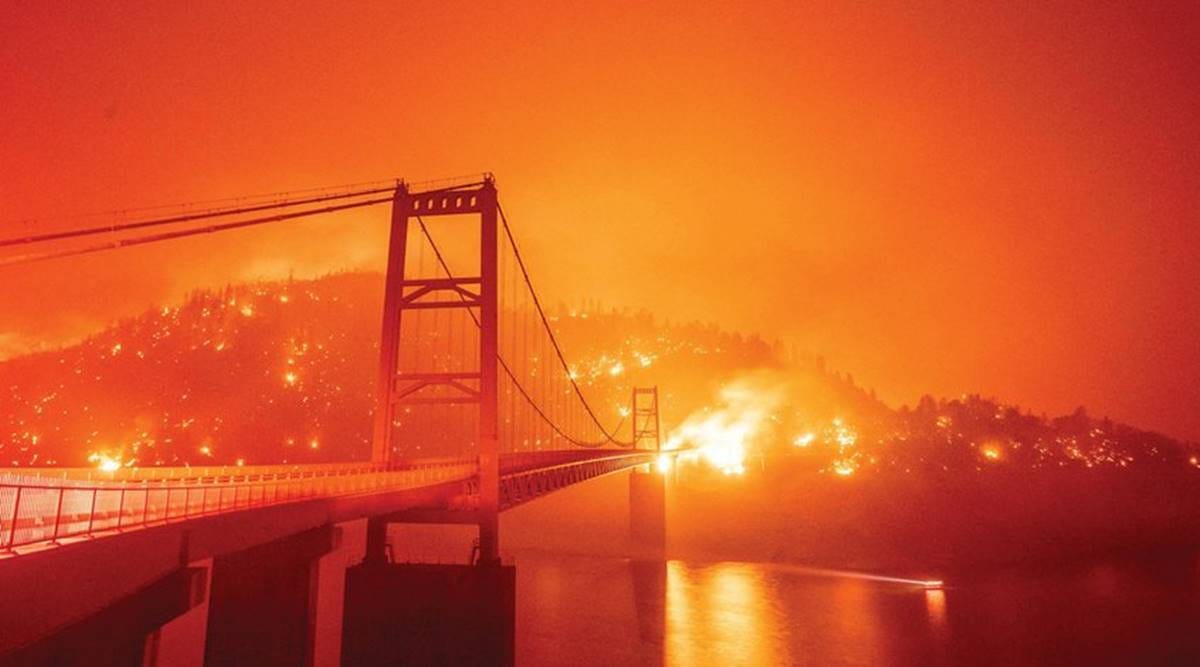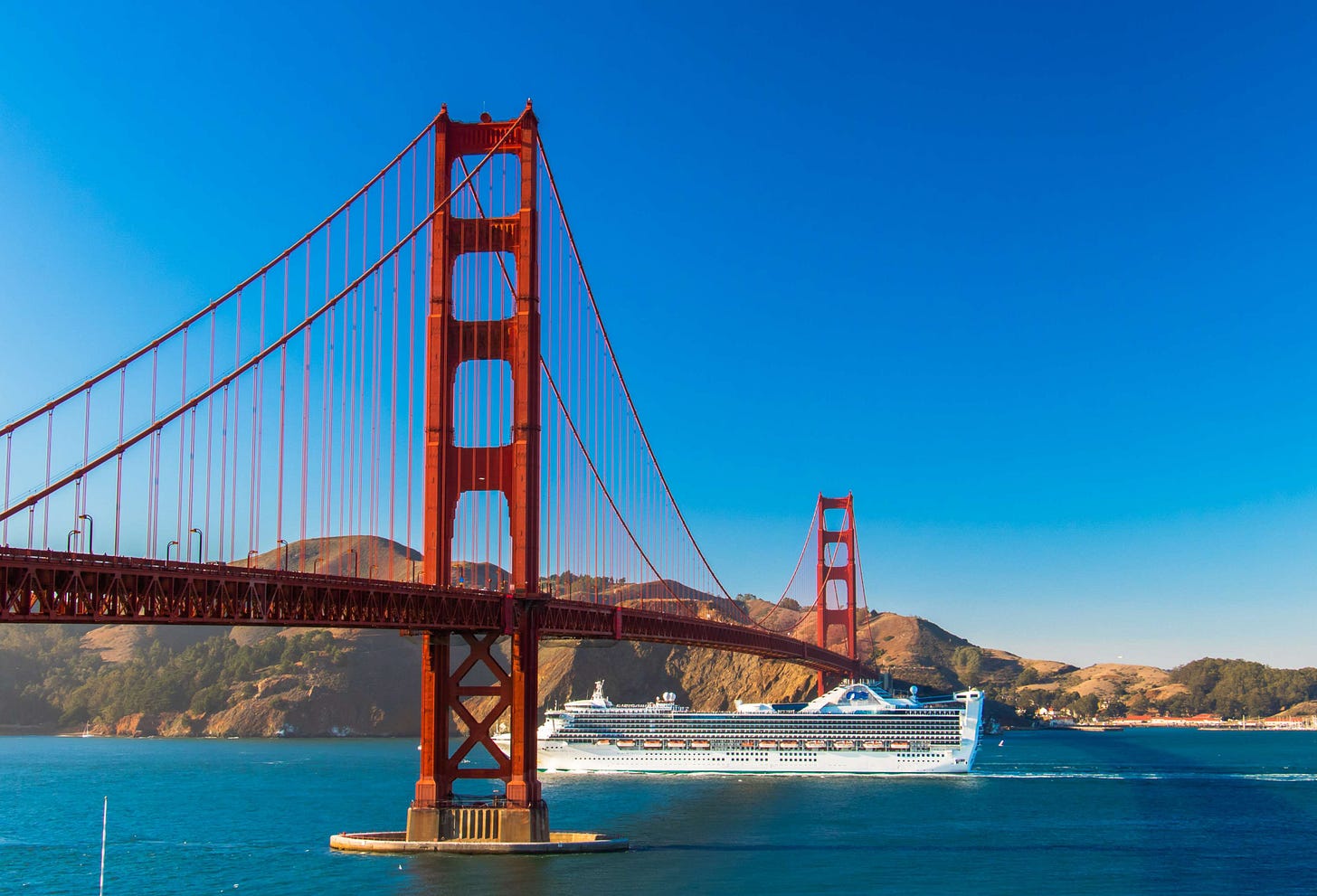As we said two weeks back, we’re not addressing climate change fast enough.
It’s a fact worth repeating: we are not addressing climate change fast enough.

“Climate change” — even calling it a Climate Crisis — can feel abstract to many people, and abstract things usually lead to inertia, confusion, and inaction. But when you see a Climate Crisis — literally live it the way California and Oregon currently are — it helps to see our current reality and future in a different light, this time apocalyptic orange.
Likely you subscribe to this newsletter because you already know this. You know climate change is a crisis.
And since we’re the type of people who like to throw down on real solutions, we want to dedicate this week to cutting through the noise and talking about real climate solutions.
How do we preserve a better future for California, Oregon, Puerto Rico, Pakistan, Bangladesh, Haiti, and so many other vital parts of the world?
Solution/Fact 1: We Need to Transform Four Segments of Our Economy
Climate change is principally caused, in order of amount, by:
Energy (burning fossil fuels to create electricity and heat)
Food (factory farming, primarily animals)
Industrial Manufacturing
Transportation (planes, cargo ships, and traditional cars)

Transforming those four industries to net zero or near-zero emissions as quickly as possible is the big picture solution to climate change. That should be the focus of policymakers, organizers, entrepreneurs, engineers, activists, philanthropists, and other industry leaders, practioners, and stakeholders.
If we accomplish this goal over the next decade, we’ll win this fight and preserve a livable future for everyone on Earth.
Solution/Fact 2: Specifically, We Need to Tranform (or Cancel) a Few Dozen Companies
There are very real economic and class dynamics to climate change. Just 100 fossil fuel corporations, led by ExxonMobil, Shell, BHP Billiton and Gazprom, are responsible for 52% of all GHG emissions worldwide since the industrial revolution.
These same companies are also responsible for the majority of climate denial propaganda and money to fund politicians who won't regulate their destruction.
Increasingly, we don’t need these companies: our economy, society, and lives work without them.
Many studies from Stanford, Berkeley, and elsewhere demonstrate we can transition to 90 or 100% clean energy with no major grid instability, increase in electricity rates, or economic downsides: we just need the will to do it and make the changes.



State policy, local policy, and utility rate design can often feel administrative and boring, but it’s incredibly important for climate policy and it’s work you can do and influence in your own back yard.
The U.S. federal government doesn’t decide our energy mix: cities, states, utilities, and utility commissions (PUCs) do.
So remember, you can have a major impact on climate change locally. Understand your local power utility, who controls its power and decision-making, and what local laws or proposals will make it more climate-friendly. It’s *very* likely there’s already a climate or environmental advocacy group working on this — find ways to get involved or support them.
Going state-by-state, the fuzzy math is we can still transform about 1/2 to 2/3rds of our economy’s climate footprint, even if a dysfunctional or inactive Federal government is fighting in the other direction.
Solution/Fact 3: International Diplomacy Matters
The United States is the world's largest economy. This also makes us the world's largest polluter by many measures, the biggest polluter throughout history, and the #2 source of new greenhouse gas (GHG) emissions behind China. That makes contributing to climate solutions an important part of America's collective, national responsibility.
But, in order to truly reign in global emissions growth, America needs to collaborate with countries like China, India, and other emerging economies (primarily in Asia).
Climate diplomacy and foreign policy will be an incredibly important role for the next several U.S. administrations.

It’s also worth noting the U.S. military is one of the largest polluting organizations on the planet, with a carbon footprint roughly the size of the nation of Portugal.
Accelerating climate change is a side effect of war spending, and we can think of a lot more important priorities to fund.
Solution/Fact 4: We Need a Big, Realistic Government Vision and Action Plan
We can debate the policy specifics or what’s in it, but we need a “Green New Deal” or GND-equivalent: a large-scale federal climate plan focused on the next ten to fifteen years (2021 to 2030-2035).
Basically, we need our elected officials to dream big, be realistic, act with urgency, and actually fund the sustainable infrastructure, jobs, programs, technology, education, and other investments needed to accelerate these changes.
If and when they don’t, we need to pressure them and hold them accountable.
Again, a lot can already be done at the local level: companies, cities, states — this all matters and adds up. But this work can be done with the wind in our sails or the wind blowing against us in the other direction. It can be a dogfight or a grand unification.
Then it’s up to everyone — communities, companies, cities — to implement the vision and make it a reality.
That’s how we address this Climate Crisis with urgency and clarity:
Focus on what matters
Transform (or cancel) what needs to change
Policy, diplimacy, collaboration, and ally-building is critical
Elect the right government — then push it to deliver on climate
From there, the future is all blue skies.

—
This Week in Sustainability is a weekly email from Brightest (and friends) about sustainability and climate strategy. If you’ve enjoyed this piece, please consider forwarding it to a friend or teammate. If you’re reading it for the first time, we hope you enjoyed it enough to consider subscribing. If we can be helpful to you or your organization’s sustainability journey, please be in touch.



